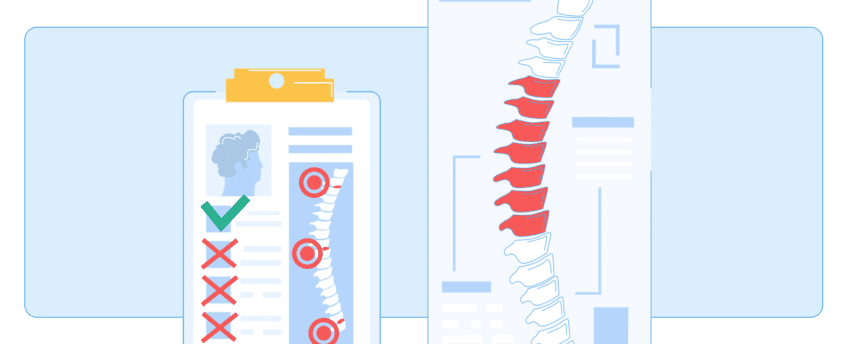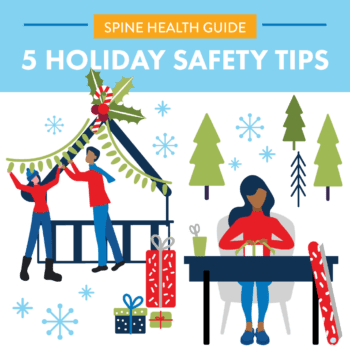Getting older is inevitable, but it doesn’t have to hurt. As we age, the impact from all the wear and tear we’ve put on our spines at a younger age starts to show up as aches and pains in our bodies. That’s why spine health plays a crucial role in our mobility and overall well-being as we age.
While our spines are naturally affected by years of usage, there are steps that we can take to ease the wear and ensure a healthy backbone, so we have comfort and mobility well into our later years. It’s essential to understand how to properly maintain spine health to preserve our quality of life each passing year.
Here are 30 tips that can reduce the risk of poor spine health and other spine-related conditions.
Table of Contents
Stay Strong and Flexible
Tip #1: Exercise regularly
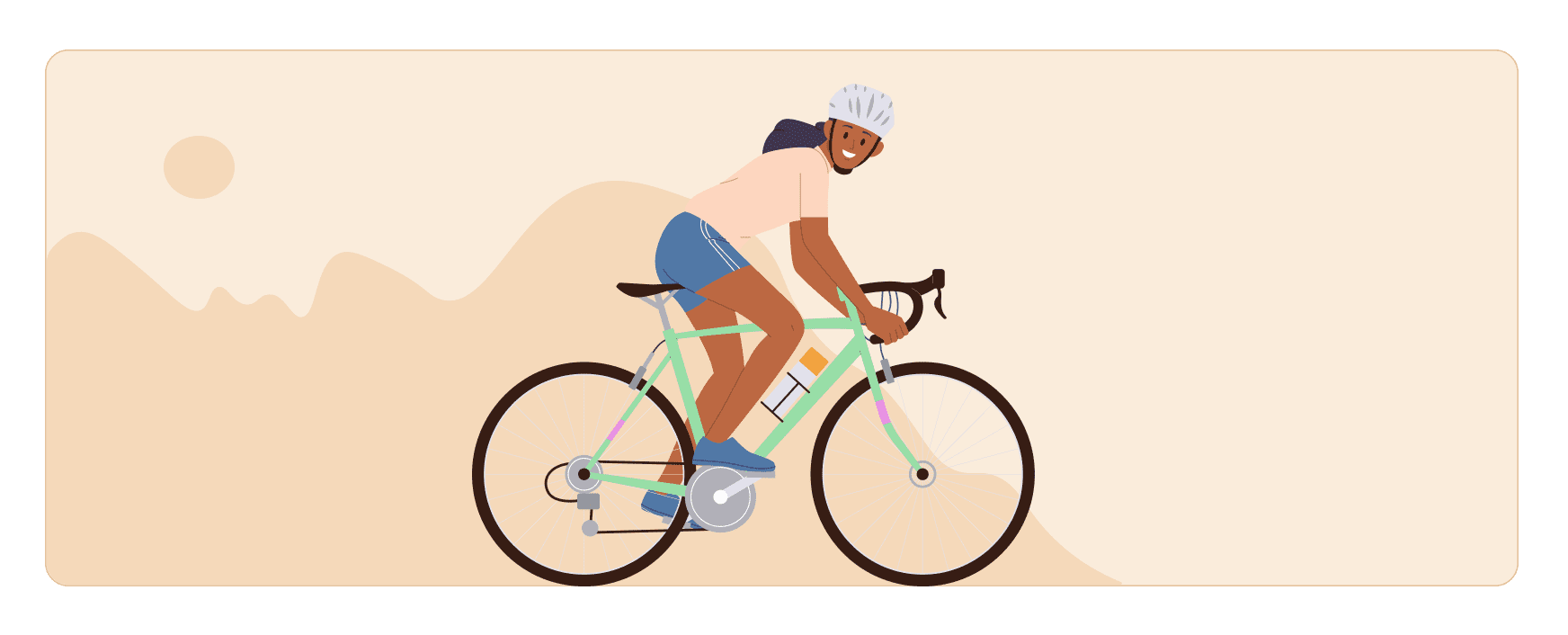
Regular exercise helps maintain a healthy weight, core and spine strength, and also increases blood flow to the soft tissues around your vertebrae, delivering more oxygen and nutrients. This promotes faster healing, reduces inflammation, and supports overall spine health by enhancing tissue repair and removing waste products, which supports the body’s natural recovery process.
Engaging in low-impact activities like walking, swimming, or cycling can also improve flexibility and contribute to a healthy backbone when the body is unable to participate in higher impact activities. Each activity improves circulation, strengthens core muscles that support the spine and reduces the pressure on spinal discs.
For those who are unsure where to start or aren’t currently exercising, low-impact activities will increasingly become easier as you gradually build muscle. Be sure to stretch before and after activities and track your progress using beginner fitness apps or online workout videos. Consult with your physician to ensure you are able to exercise safely and effectively.
Tip #2: Warm up and cool down when exercising

Warm-ups and cool-downs are often overlooked when exercising, but they’re an important part of keeping your spine healthy.
Warm-ups increase blood flow to the muscles, improve flexibility, prepare the body for more intense activity, and can help to prevent injuries. When you’re warming up, incorporate movements that engage the core, lower back and legs, but also specifically target the areas that you intend to use during our workout. This can help reduce the risk of strains and sprains while also ensuring your spine is well-supported during physical activities.
Warm-ups should be about five to ten minutes before exercise and should steadily increase your heart rate. When warming up, include dynamic stretches that mimic the activity you are about to perform. For instance, running in place for 30 seconds mimics the movement of distance running but also gets the heart rate up to prepare you for a run.
Cool-downs after exercise can help your muscles gradually relax, which reduces stiffness and tension around your back. This gentle transition from activity to rest allows blood flow to stay steady, helping to remove waste products like lactic acid that can build up during exercise and cause soreness. Stretching during a cool-down also improves flexibility, which can reduce pressure on your spine, helping to prevent injuries and keep your back feeling strong and mobile.
Cool-downs should last about 5-10 minutes. This gives your heart rate time to gradually return to normal and allow your muscles to relax and stretch out properly. You will get the most out of your exercise routine if you take the time to warm up and cool down.
Tip #3: Strengthen your core

There are over 40 muscles in the back that support the spine. The core muscles include the deep and superficial abdominal muscles, the back muscles, the buttocks, and the pelvic floor region. Strengthening the core and lower back can enhance balance, posture, and stability and reduce the risk of common issues like herniated discs or chronic back pain.

Back pain doesn’t always originate from the spine itself but can come from the muscles that support the back. Strengthening these muscles can significantly reduce pain and improve overall back health.
Make sure core exercises like planks, abdominal crunches and pelvic tilts target the core abdominal muscles to increase spine health and support the backbone.
If you’re looking to get started, here are a few core-strengthening exercises that can strengthen the muscles in your back:
Plank:

A plank is an exercise where you hold your body in a straight line, like a board, using your arms and toes for support. Your back should stay flat, your stomach muscles tight, and your body straight from your head to your feet. It’s great for strengthening your core, which includes your back, stomach, and hips.
Beginners should start by holding a plank for 10-20 seconds and gradually increase the time and number of sets.
Abdominal crunches:

This is a simple exercise to strengthen your stomach muscles. To do abdominal crunches, lie on your back with your knees bent and feet flat on the floor.
Then, lift your shoulders and upper back off the ground while tightening your stomach muscles, then slowly lower yourself back down. It’s like a small sit-up, but you don’t come all the way up. Crunches focus on working the muscles in your core, especially the upper abs.
Beginners can start with 10-15 crunches and aim for 2-3 sets. Avoid this exercise if it strains your neck or low back.
Pelvic tilts:

This exercise involves you lying on your back with your knees bent and feet flat on the floor. Then, gently tighten your stomach muscles and push your lower back into the ground, tilting your pelvis slightly upward. Hold this position for a few seconds, then relax and repeat. It’s a gentle way to improve flexibility and strengthen your lower back.
Beginners should start with 2-3 sets of 10 repetitions of this exercise. Try to hold the tilt for 3-5 seconds before relaxing.
Tip #4: Strengthen your lower body

Strong hips and glutes (the muscles in your buttocks) support your spine by helping keep your body stable and balanced throughout the day. Strong hips and glutes help take pressure off your lower back by properly aligning your pelvis and spine when you move or stand. When these muscles are strong and flexible, they help distribute weight evenly, reducing strain on your back. This prevents your spine from doing all the work and contributes to better posture. By developing strength in these areas, you reduce the risk of lower back pain and improve your ability to perform daily activities with ease.
Similarly, hamstrings (the muscles at the back of your thighs) support the spine by helping maintain proper posture and movement. Tight hamstrings can pull on the pelvis, causing lower back pain. Incorporating regular hamstring stretches into your routine can help alleviate tension in the lower back and improve flexibility.
Exercises like squats, lunges, and hip thrusts can effectively target these muscle groups.
Tip #5: Stretch daily

Stretching isn’t just for exercise. Incorporating a habit of regular stretching into your daily routine can help maintain mobility, reduce muscle stiffness, and improve blood flow to the affected areas.
Focus on stretches for the lower back, hamstrings, and hip flexors to enhance flexibility and reinforce a healthy backbone. Targeting these specific muscle groups also supports the alignment of the pelvis and spine, ultimately contributing to overall spinal health and well-being.
Tip #6: Loosen up your spine and hips

Add this simple mobility primer to your morning routine to get your body ready for the day. The hips and spine work together and mobility of one region affects the other.
To do a hip hinge, you should stand with feet hip-width apart with a slight bend in your knees and bend, or “hinge,” at your hips by pushing your buttocks back while keeping your spine neutral. This not only teaches proper lifting mechanics but also stimulates blood flow to the muscles in your back, hips, and legs. Repeat this exercise before heavy lifting to help protect from injury.
Tip #7: Take walking breaks during the day

Walking encourages the natural movement of the spine in a low-impact way, supporting spine health.
Incorporating short walking breaks of about five to ten minutes into your routine can improve circulation, improve bone strength, relieve tension from prolonged sitting, and further promote spinal well-being.
Daily Maintenance Habits
Tip #1: Practice spinal breathing

Spinal breathing involves the practice of consciously engaging your core and diaphragm muscles while breathing deeply. This promotes spinal mobility and better posture and strengthens the muscles that support your spine.
To practice spinal breathing, sit on the floor, sit up straight, and slowly breathe in through your nose and out through your mouth. As your chest cavity expands on the inhale, imagine the breath going through the spinal column as your spine elongates. Inhale and exhale deeply for five to ten minutes.
Tip #2: Practice good posture
Maintaining proper posture throughout the day can help maintain the natural curvature of the spine and prevent imbalances that can lead to pain and muscle fatigue. Conditions like kyphosis and scoliosis can also be exacerbated by poor posture.
Reduce the pressure on the spinal discs and muscles by sitting and standing with chin up and your shoulders back to keep the spine aligned.

Good posture also improves breathing, circulation, and overall spinal health.
Tip #3: Maintain a neutral spine when sitting

A neutral spine is in the natural position when all three curves, cervical, thoracic and lumbar, are in alignment with each other. This includes your head being directly over your shoulders, shoulders over your hips and the pelvis in a neutral position.
Keep your spine in a natural “S” curve while sitting. Proper sitting posture is crucial for spinal health; it helps distribute weight evenly across the vertebrae and reduces pressure on the discs.
Extended sitting with poor posture can lead to muscle imbalances and increased pressure on the spinal discs. This includes slouching or hunching shoulders, leaning to one side or not having feet flat on the ground.
If we don’t pay attention, improper sitting posture can happen during everyday activities like working at our desks or playing video games at home.
Tip #4: Take regular breaks from sitting

Prolonged sitting can compress the discs in your lower back and contribute to poor posture, leading to stiffness, pain, or long-term spinal issues.
To maintain a healthy backbone, stand up and stretch every 30 minutes to relieve pressure on your spine and improve circulation. Regular movement reduces muscle tension, aids in back pain prevention, and prevents the negative effects of a sedentary lifestyle.
To stay consistent, use tools like reminder apps, phone alarms, or wearable fitness trackers that can encourage you to move and build healthy habits throughout the day.
Tip #5: Avoid prolonged standing

Standing in one position for extended periods, more than 30 minutes to an hour at a time, can lead to muscle fatigue and increased pressure on the spinal discs, potentially causing discomfort and pain.
Gravity is pulling on your body at all times, and standing for long periods of time will cause your spine to naturally compress throughout the day, which can lead to spinal misalignment, fatigue and back pain. If you have a strong core, you can withstand the forces of gravity longer before poor posture develops.
To keep your spine healthy while standing, try alternating your weight and taking breaks to bend or sit down when possible. This can help alleviate stress on your spine, promote better circulation, and enhance overall comfort throughout the day. Too much time spent in any one position can be detrimental, so alternate when possible.
In moments when you’re unable to sit down, shifting your weight from one foot to the other, practicing deep breathing, or doing a few hip hinges can reduce strain on your spine and lower back.
Tip #6: Maintain a healthy weight

As the obesity rate in the United States has consistently risen over the past decades, it’s estimated more than a billion adults are overweight across the world.
There is a strong correlation between being overweight and back pain, as the additional strain on the spine puts people at a higher risk of developing chronic back issues. Excessive weight can lead to poor posture, reduced mobility, chronic pain, and chronic inflammation. By maintaining a healthy weight, you can alleviate this pressure and support your overall spine and whole body health.
To maintain a healthy weight, be sure to focus on key factors such as eating a balanced diet rich in protein and whole foods like fruits and vegetables, participating in regular exercise, getting enough sleep, and managing stress. By reducing weight, the strain on the spine will be reduced, relieving pressure on the intervertebral discs and joints.
Tip #7: Eat anti-inflammatory foods

Nutrition plays a crucial role in supporting your bone health. Including omega-3-rich foods like salmon and walnuts in your diet can reduce inflammation throughout your body.
Inflammation is the process in which the immune system recognizes and removes harmful and foreign stimuli and begins the healing process, but chronic inflammation can cause a variety of health issues like heart and autoimmune disease and diabetes. In the back, inflammation can lead to swelling and irritation in the tissues around your spine: in the muscles, ligaments, or even the spinal discs. When these tissues are inflamed, they can put pressure on nearby nerves or make movement painful. Inflammation is your body’s way of trying to heal, but it can also make the area feel sore, stiff, and sensitive, which often results in back pain.
A diet high in anti-inflammatory foods helps mitigate chronic pain and support overall joint health.
Some anti-inflammatory foods include:
- Salmon
- Nuts
- Olive oil
- Yogurt
- Leafy greens
- Berries
- Turmeric
- Ginger
Tip #8: Hydrate regularly

Proper hydration plays a role in maintaining the fluid content in your spinal discs that act as shock absorbers between vertebrae. Your spinal discs are like small cushions that sit between the bones of your spine.
Each disc has a soft, jelly-like center surrounded by a tougher outer layer, which allows the disc to remain flexible and easily absorb all the impact the spine experiences throughout the day. When well-hydrated, these discs are more pliable and better able to withstand the stresses of daily movement and exercise, decreasing the likelihood of back pain or injury. Without enough water, the disc can become stiff, less flexible, and more prone to damage.
It is recommended that adults aim to drink at least 8 cups of water per day, but your specific needs can vary depending on activity level, climate, and health. Early signs of dehydration are thirst, dry skin, and dark colored urine, while chronic dehydration can cause fatigue, muscle cramps, and headaches.
For those looking to incorporate more water into their daily routines, be sure to carry a reusable water bottle to encourage sipping, set phone reminders or apps to track your water intake and incorporate fruits and vegetables that have high water content, like cucumbers, watermelon and oranges, into your diet regularly.
Simple Prevention Strategies
Tip #1: Lift with your legs, not your back
Overloading your back can lead to serious injuries, such as sprains, disc herniations, or even permanent damage to the vertebrae.
Utilizing proper equipment or asking for help ensures safe lifting and reduces the risk of long-term spinal issues. When lifting, bend your knees, keep your back straight, and use your leg muscles to avoid placing excessive strain on your lower back.

This technique distributes the weight more evenly and can help keep the spine from injury. Lifting correctly is an important skill to master. Try this technique with light objects to get the hang of it, and consider practicing in front of a mirror to be sure you’re lifting properly.
Tip #2: Wear your backpack properly

Distribute weight evenly when using backpacks or carrying bags to support spine health and prevent back pain. Using proper backpacking techniques helps maintain a healthy backbone by preventing excessive strain on one side of your body, reducing the risk of muscle imbalances and spinal misalignment.
When packing your backpack, start by placing heavier items closer to your back and at the bottom of the bag to keep the center of gravity close to your body, aiding in back pain prevention. For prolonged carrying, take regular breaks to rest and stretch.
By adopting these techniques, you can significantly reduce the risk of back strain and maintain better posture while carrying loads.
Tip #3: Avoid carrying heavy bags on one shoulder

Consistently carrying weight (like backpacks, purses or groceries) on one side forces your body to compensate, which can lead to muscle strain and misalignment of your spine and shoulders. Over time, this can contribute to chronic pain and postural issues.
Instead, opt for cross-body straps or backpacks that distribute weight evenly across both shoulders.
Tip #4: Avoid Tech Neck
Two common causes of chronic upper back and neck pain today are carrying heavy backpacks or shoulder bags and the widespread overuse of smartphones, leading to issues like “tech neck,” “text neck,” or iPosture. “Tech neck” refers to the strain and damage caused by frequently looking down at phones, tablets, or other devices for extended periods.
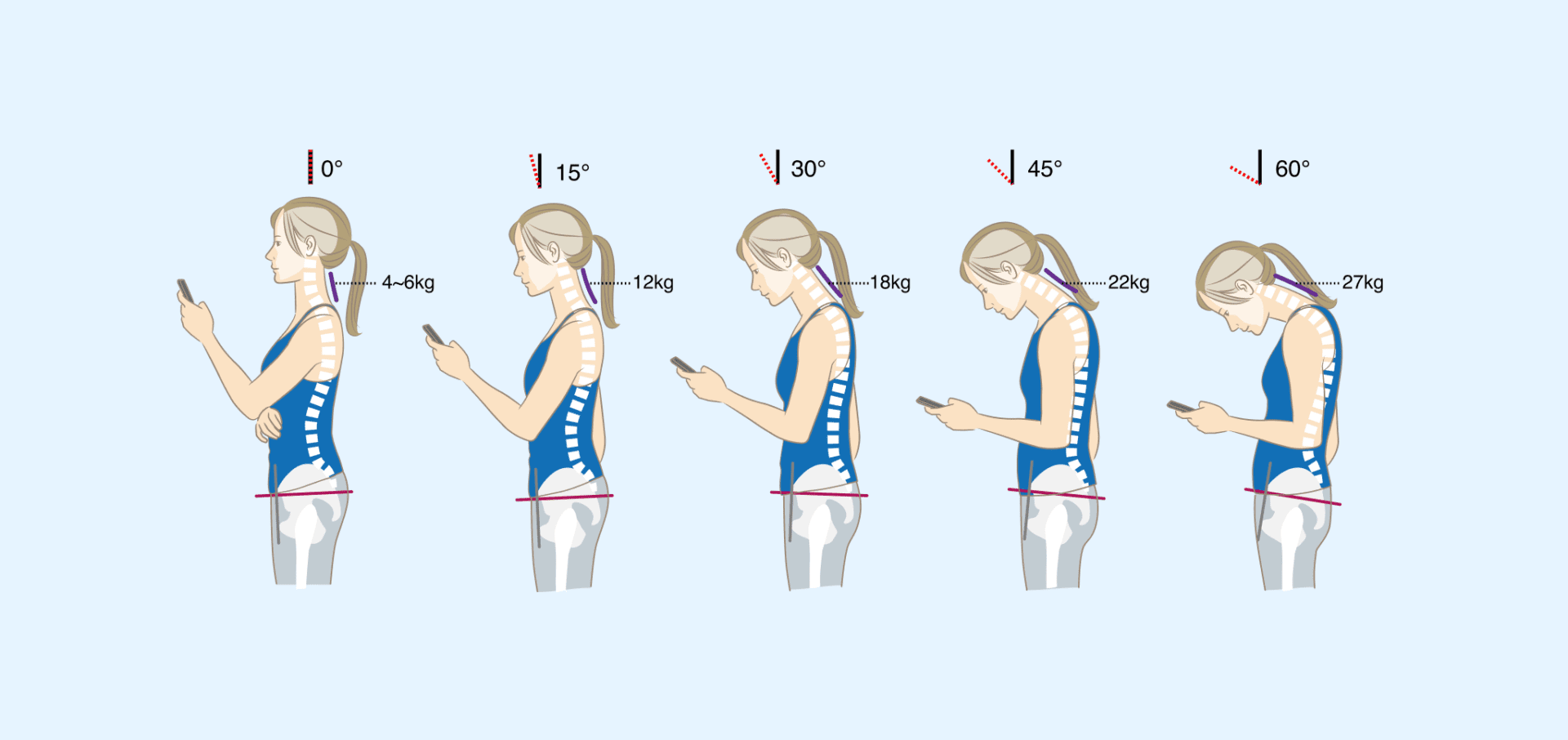
To alleviate tech neck, be sure to take frequent breaks, doing simple neck stretches, and strengthen your core muscles to relieve tension and prevent long-term damage. Also, ergonomic setups at home or work can keep your spine healthy and free from tech-related pain.
Tip #5: Improve workspace ergonomics

If you work from a desk, consider how you can arrange your space to promote your spine health. Proper desk ergonomics help maintain good posture and reduce strain on the neck and back. Here are a few tips for improving your workspace:
- Arrange your desk so your computer screen is at eye level to prevent hunching or straining of your neck.
- Use a chair that supports the lower back and encourages an upright position, ensuring that your hips are aligned with your knees.
- Check your keyboard and mouse placement so that you’re not slouching to use them.
- Level your feet and keep them flat on the floor.
Tip #6: Pay attention to your sleep posture
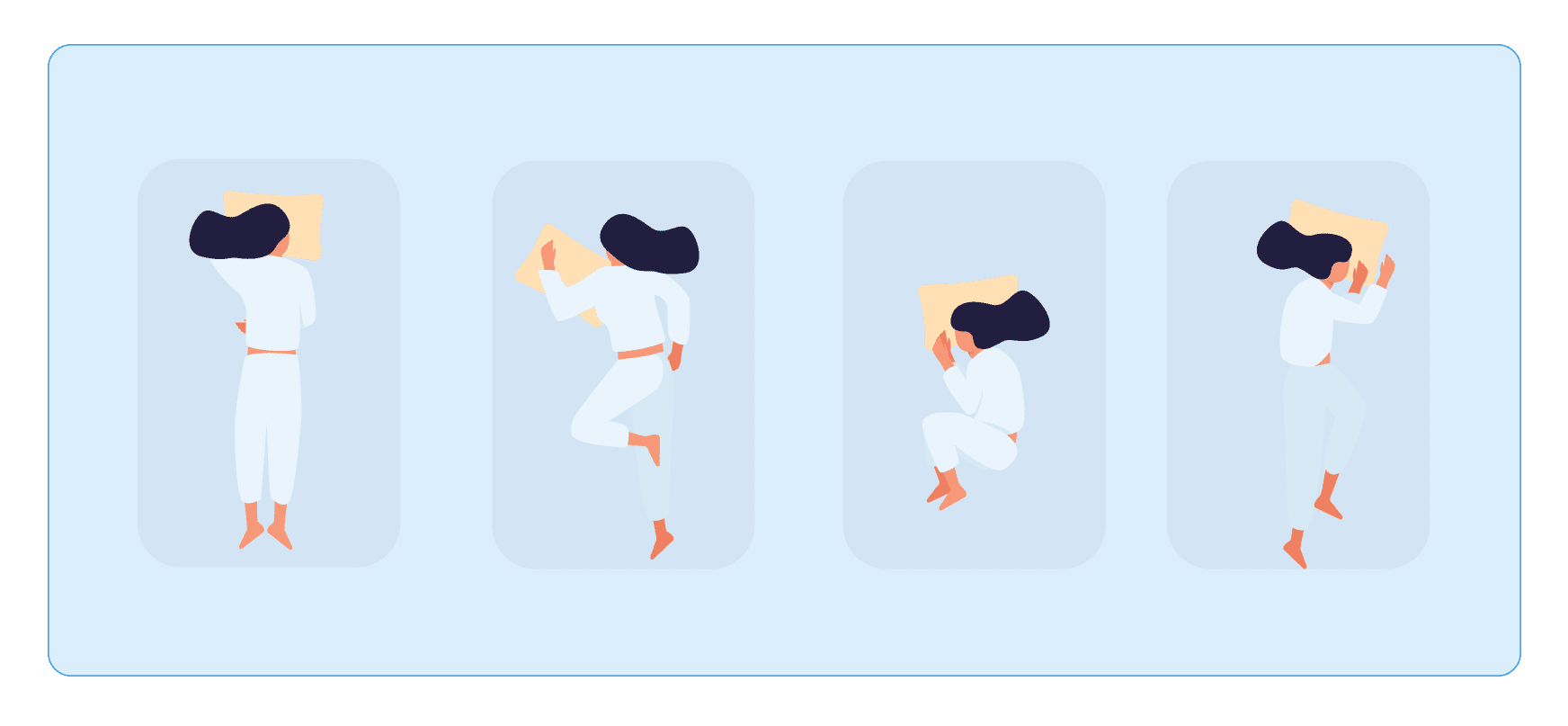
Your sleep posture can play a crucial role in spinal and overall health. Proper spinal alignment can promote better sleep habits that contribute to physical and mental health. Improper spinal alignment during sleep can cause strain on your neck, back and hips and disrupt normal sleep patterns that negatively impact physical and mental health.

Sleeping on your back or side supports the spine’s natural curves, reducing pressure on the discs and supporting proper spinal alignment.
For back sleepers, consider putting a pillow under your knees to maintain the natural curvature of your spine. If you’re a side sleeper, place a pillow between your knees to keep your hips, pelvis and spine aligned.
In general, try to avoid sleeping on your stomach as it can strain your neck and lower back. However, if this is your preferred sleeping position, try putting a small pillow under your stomach to reduce the unnatural low back arch that occurs with this position and try a flatter pillow under your head to avoid neck strain.
Tip #7: Use a firm mattress

A supportive mattress helps distribute body weight evenly, preventing pressure points and reducing the risk of back pain or stiffness. Ensure your mattress provides adequate support to maintain the spine’s natural alignment during sleep.
Proper spinal support while sleeping promotes recovery and helps prevent issues, such as misalignment or exacerbation of existing spinal conditions.
A good night’s sleep is also crucial to overall physical and mental well being.
Tip #8: Wear supportive shoes

Shoes with good arch support can help maintain proper alignment of your spine. Supportive footwear reduces strain on your lower back by promoting even weight distribution and improving posture, aiding in back pain prevention.
Be sure to look for shoes with a proper arch in the sole that promotes your foot’s natural shape. Many local shoe stores can look at your foot and make recommendations on specific shoes that can help support your arches.
In general, try to avoid frequent use of high heels or other ill-fitting footwear that can throw off your body’s balance and lead to back pain, muscle fatigue, and long-term spinal issues.
Tip #9: Reduce stress

Stress triggers the release of the chemical cortisol, which can increase inflammation in the body. To combat stress-related back issues, incorporate relaxation techniques into your daily routine, such as deep breathing exercises, meditation, or yoga.
Regular physical activity is essential for back pain prevention and can also help reduce stress levels and promote muscle relaxation.
Optimization Tips
Tip #1: Get a massage

Therapeutic massages can be useful in preventing back pain. A therapeutic massage focuses on manipulating the muscles and soft tissue to relieve pain, reduce stress and promote circulation. They can help alleviate pain or stiffness in the back and neck by promoting relaxation and reducing muscle tightness. This has the added benefits of reducing muscle tension and improving circulation.
When getting a massage, it’s important to avoid eating heavy meals, alcohol and caffeine to ensure the best outcomes of your massage. Also drink a lot of water before and after massages to ensure the toxins that are released in your body can be flushed out.
Tip #2: Quit smoking and vaping
Smoking can deprive spinal tissues of essential nutrients and oxygen, accelerating wear and tear. And vaping can be just as dangerous, even though some might think it’s a healthier way to consume nicotine.
Smoking and vaping impair the body’s ability to heal itself, potentially prolonging recovery from back injuries. Research has found that smokers are nearly 50 percent more likely to need spinal surgery than non-smokers. Smoking increases the lifetime risk of developing a spine fracture by 32 percent in men and 13 percent in women.
Quitting smoking and vaping not only benefits your spine but also improves overall health, cancer risks and respiratory issues.
If you’re looking to quit smoking or vaping, the National Cancer Institute recommends these five steps be the START of every successful cessation plan:
- Set a quit date.
- Tell family, friends, and co-workers you plan to quit.
- Anticipate and plan for the challenges you will face while quitting.
- Remove cigarettes/vapes and other tobacco products from your home, car, and workplace.

Tip #3: Use ice or heat therapy for soreness

Ιf you’re experiencing back pain, consider using ice or heat to help stimulate healing in the structures that support the spine.
Ice is effective for reducing swelling because it constricts blood vessels, which decreases blood flow to injured areas to help reduce inflammation and numb the pain. After an acute injury, use ice to decrease local swelling for the first 48-72 hours.
Heat, on the other hand, promotes blood flow by dilating blood vessels to increase circulation to the muscles and tissues. Heat promotes blood flow and relaxes tense muscles. Note, heat should be avoided in the initial stages of an acute injury as it can exacerbate swelling.
When injured or hurt, use ice within the first 24 to 48 hours to reduce swelling. Once reduced, you can apply heat to help promote circulation and blood flow to aid in the healing process.
Tip #4: Use a foam roller for self-myofascial release

Foam rolling can improve circulation and increase flexibility, aid in recovery and reduce muscle soreness. Foam rolling refers to using a cylindrical foam roller to apply pressure to specific areas of your body, and is used against a hard floor surface. It can help target the muscles around the spine and help alleviate tightness and muscle knots.
To use a foam roller, position your body on the roller and use your body weight to apply pressure in the targeted area by rolling back and forth for 30 seconds to a few minutes on each muscle.
Tip #5: Consult a physical therapist

If you have recurring pain, seek professional help to assess muscle imbalances. A physical therapist can provide personalized exercises and strategies to address specific issues, improve strength, and promote better posture to ensure a healthy backbone.
Physical therapy is not just for treating problems, consider preventative PT if you have been dealing with mild spinal issues that come and go to prevent future flare ups and progressive problems.
Tip #6: Get a baseline bone health assessment

Osteoporosis is a condition characterized by the weakening and deterioration of the skeleton, which includes the spine. Having osteoporosis indicates the bones are more fragile and susceptible to fractures. Compression fractures of the vertebrae, leading to back pain, are often the first indicators of this progressive, but silent, condition.
If you are over the age of 50, have a family history of osteoporosis, or have any risk factors for low bone mass, ask your doctor for a DXA scan the next time you visit. Having a baseline understanding of your bone health now is important to track future changes.
A DXA, or Dual-Energy X-ray Absorptiometry scan, is a medical imaging test that uses low-dose X-rays to measure bone density and body composition, including fat and muscle mass.
Osteoporosis is a treatable disease and may even be preventable with early intervention and lifestyle changes to prevent bone loss and fractures. Early detection can prevent spinal fractures and chronic back pain and is essential for spine health.
